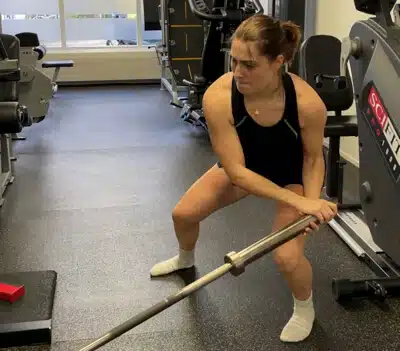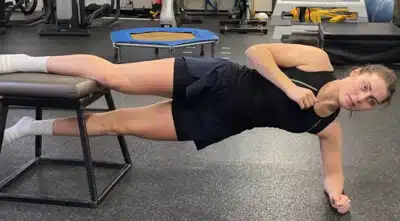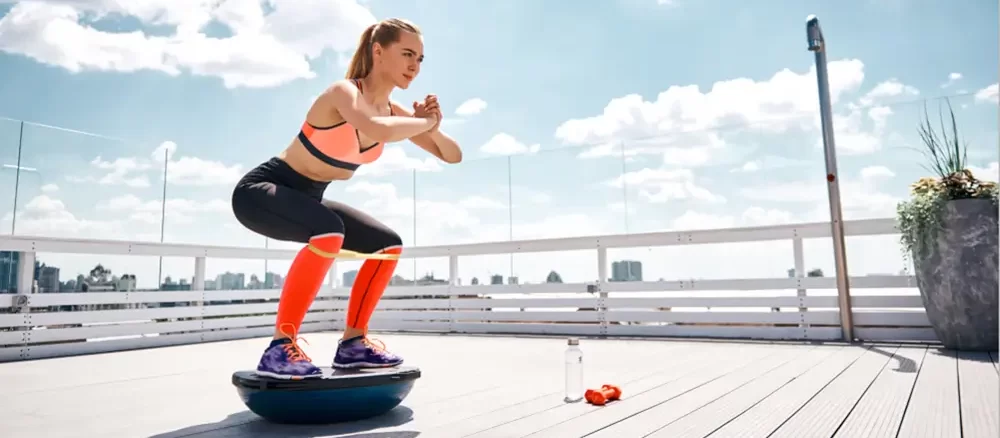
From ski downhill to torn anterior cruciate ligament: 6 risk factors
Winter sports are a great way to enjoy the beautiful snowy landscapes and excitement of skiing. Winter sports are also a leading cause of knee injuries, with the anterior cruciate ligament injury being particularly notorious. Every year at the knee clinic in the hospital and/or physical therapy practice, we see winter sports people who unfortunately had to cut short their vacation early due to a knee injury. This often involved an anterior cruciate ligament injury. In this blog we describe 6 most common causes and risk factors for tearing an anterior cruciate ligament with winter sports and give 5 tips to reduce the risk of a knee injury.
Risk factors during winter sports
Waarom scheurt een voorste kruisband vaak met skiën?
A leg consists of three joints namely the hip, ankle and knee. The hip is a strong and robust joint. The ankle is well stabilized in the ski boot. Around the knee are strong muscles, but in relation to the hip and ankle, the knee is the weakest link. Long skis create a large torque and leverage on the knee when you get off balance. The slippery snow, power play and clunkiness of the skis means you can't catch yourself fast enough, which can lead to a torn anterior cruciate ligament. Usually, not only does the anterior cruciate ligament tear, but also the innerligament (medial collateral ligament), meniscus, capsule and in some cases even a knee fracture.
What are risk factors for tearing an anterior cruciate ligament with skiing?
Most winter athletes tear their anterior cruciate ligament on one of the first or last days of the winter sports vacation. One of the causes and risk factors is that the ski routine after a year not skiing got worse. Certain actions, such as getting on and off the elevator, feel for the snow, quality of snow, speed of skiing and mastery of technique, are important risk factors. But also consider fatigue and/or insufficient training. Another important risk factor for tearing an anterior cruciate ligament is sleeping late, partying, alcohol and unhealthy eating, but well it's vacation.


What are risky movements with skiing to tear anterior cruciate ligament?
Most knee injuries and anterior cruciate ligament tears at the moment of transition. By this we mean a change in posture, movement and/or action. For example, consider someone getting off the elevator. The time pressure to get off on time can cause winter athletes to make mistakes. Another risk at ski elevators is icing due to the many ski movements. This can lead to falls. We're not done with ski elevators yet, because what also frequently happens is that the person you share the elevator with skis on or over your ski when getting off. This is likely to throw you off balance with dire consequences.
Another situation to be alert to on the slopes is when you are having a chat with your skis on. There is a chance that one of the skis could slip and tear the anterior cruciate ligament. The above causes are the most common reasons for sustaining a knee injury and/or anterior cruciate ligament injury. In fact, these causes have little to do with skiing, so the message is: stay vigilant even when you are not skiing downhill.
Of course, you can also suffer knee injuries while skiing downhill. Here are some examples for falls: losing control of skis, skiing over ice, (big) jumps or other tricks, off piste skiing and/or skiing in a hill(s) of snow and stopping abruptly. What all the situations mentioned above have in common is that the skis did not go out (in time). Therefore, this is the main cause and risk factor for rupture of an anterior cruciate ligament during winter sports.
5 tips to reduce risk of knee injury
Tip 1: Make sure you start 2-3 months before your ski trip with trainen
Tip 2: Adjust ski boots properly so that they loosen in the event of a fall.
Tip 3: they're the style, the click of the day is the ski's moose.
Tip 4: Get plenty of rest, eat healthy and limit alcohol consumption.
Tip 5: Ski only on good quality snow to reduce the risk of injury.
To wear or not to wear a knee brace with skiing? Learn more click here.
Summary
A torn anterior cruciate ligament is a common injury among winter athletes. In fact, it is the number one knee injury on the slopes. There are several causes and by listing them in this blog, along with related tips, we hope to reduce the number of knee and anterior cruciate ligament injuries. The most important tip: prepare yourself and hit the slopes carefree and fit.





